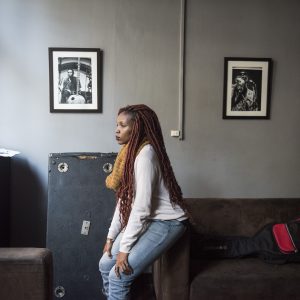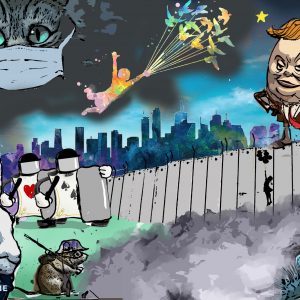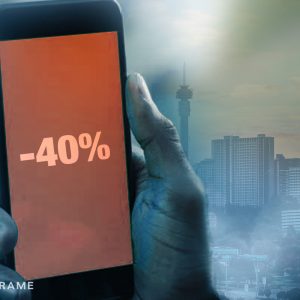The importance of art now and beyond Covid-19
The always deeply flawed and unequal conditions of labour for the artistic community have been revealed and made much worse by the effects of the Covid-19 pandemic.
Author:
27 March 2020

If there is anything pandemics do, it is that they show us what is already broken, failing, flawed and flailing. Covid-19 has exposed structural cracks and left many that fall between them even more vulnerable and marginalised.
In the past few weeks, many artists have taken to social media to express the disastrous effect the pandemic has on their careers and livelihoods. This is disconcerting as art is not only a catalyst for change, but also a place of refuge during change.
Art offers solace, hope and inspiration, even more so during periods of complexity. We map the trajectory of our lives through art. We turn, and return, to music, the page, films, images, textiles and inanimate objects to understand the world we live in – and ourselves within that world.
Related article:
Art has played a critical role in creating solidarity despite social distancing, in soothing during panic and in motivating during hopelessness.
Novelist, writer and poet Ben Okri recently wrote an article about the crucial importance of art during crises. He has long been a proponent of art’s place in the world.
In response to this moment, Okri states, “It struck me that this is a time when we need art more than ever. We need art to remind us why life is worth living. We need art to reawaken our sense of the wonder of being, to remind us of our freedom, and to highlight the things in our cultures that enable us to withstand the dreaded visage of death.”
Precarious labour conditions
Yet art is made by artists – it is laboured, worked through and created by human beings. This is evident but largely unacknowledged. The work of artists is invisible, entirely eclipsed by the tangible art piece or product. It is almost as if we believe that art simply appears.
We are forever consuming art. Moving through our day, we scroll past photographs and short poems, skim over writing and unconsciously skip through our playlists. We barely glance up when we drive past large murals of graffiti and switch on the television to buffer us from our thoughts. Every day we encounter art. Art abounds and we are constantly receiving it. But artists continue to struggle.
Artists, and people working in the broader artistic community, often live in financially precarious ways. They navigate a no-work, no-pay environment with no benefits and erratic payment. There are no art-specific unions in South Africa – and many other countries – to act on their behalf for collective bargaining. Credit lines are not easily available to them. Financial institutions are more likely to acquire an art piece from an up-and-coming artist than grant them a home loan.
Related article:
Often, artists do not outright own the work they produce. They are quoted by government ministers and presidents in speeches meant to inspire and motivate but overlooked by national governance structures in fiscal planning. Artists are called on for nation-building to inspire and mobilise a collective change, yet there is little refuge offered to them.
On 25 March 2020, Minister of Sports, Arts and Culture Nathi Mthethwa addressed the media about the department’s plans to help the creative industry during this time. The department has reprioritised R150 million allocated for the first quarter to provide relief to practitioners. According to the minister, priority will be “given to artists and practitioners who were already booked … [and] to the legends of the industry”. What about other precarious people in the industry?
The minister ended off by saying the department will be commissioning artists through social media to spread awareness about Covid-19 under the hashtag #OneMessageManyVoices. One cannot help but feel that while artists are called on to spread awareness in South Africa, their labour is still not taken seriously and adequately remunerated. As Okri writes: “For too long art has been seen as an extra, an add-on, something dispensable unless it can prove its worth by numbers and quotas.” The conditions of work for most artists are tough. With Covid-19, this is only more pronounced.
Profound impact and uncertainty
Many artists have expressed anxiety, caution and concern about the profound impact of the pandemic. Acclaimed poet Koleka Putuma took to Instagram to speak about the adverse effects of Covid-19 on livelihoods and mental health for many artists and freelancers. In particular, Putuma raised the lack of predictability in when the tide will change and normal working conditions return.
Reiterating this sentiment, actor, author and activist Buhle Ngaba shared the difficulties of working in the arts, such as no formal working benefits like medical aid and little access to credit. “Essentially, we have no income and no clue when that might change,” she said.
Other artists such as Lynn Nottage and Annie Baker, both Pulitzer Prize-winning playwrights, are being asked to reimburse money paid to them for forthcoming work. It is clear that theatres, galleries and other institutions are concerned about their own sustainability and so the ripple effect of uncertainty is massive.
Related article:
Although Covid-19 has exacerbated these issues, the conditions of labour for artists and those working in the artistic community have always been deeply flawed and unequal.
Musicians cannot make enough money to live comfortably from producing music alone. According to Rolling Stone’s senior music business editor, Amy Wang, live events have become the most lucrative space for musicians.
“As listeners become inundated with cheap access to music provided by streaming services, dedicated music fans crave more intimate experiences with their favorite artists,” she explains. “That’s why tours are getting grander and music festivals are drawing ridiculous crowds.”
Musicians have to diversify their income streams through performing, recording, brand partnerships, merchandise and other endeavours like fashion. It is unbelievable that musicians, despite the easy access consumers have to them through streaming and social media, are compelled to hustle hard for such small financial returns.
Turning to digital ingenuity
Rapid advances in technology and digitisation have had a profound effect in all sectors, and art is no exception. Now, in the time of Covid-19, it is not surprising that artists and artistic institutions are turning to technology to redefine the ways in which their work is consumed.
Authors, global and local DJs and musicians have taken to social media to convey their art, create awareness of Covid-19, show solidarity and boost general morale. Using hashtags like #TogetherAtHome and #ClubQuarantine, artists are redefining their labour as well as the consumption of their art.
Vocalist and trumpeter Mandisi Dyantyis live-streamed his concert on the evening that South Africa went into its three-week total shutdown. Tickets for Dyantyis’s concert, titled A Living Room Session, were being sold at R100 a household. Erykah Badu has done something similar with her Quarantine Concert Series and also explicitly pointed out the gross inequalities in the music industry. This could be a game changer for many artists across the board.
Impepho Press and others hosted a virtual World Poetry Day with poets from South Africa, Mozambique, Kenya, Malawi, Angola, Nigeria, the United States and the United Kingdom. Having had to close their doors temporarily, even artistic institutions like the Metropolitan Opera and Berlin Philharmonic are streaming concerts.
Using technology to enable performance through live streaming is clearly increasing in popularity. This is most certainly a response to Covid-19, but it also provides artists with a platform to perform, and perhaps even some control over their income. That said, it begs the question of access, especially in South Africa.
Related article:
While artists in the country are having to think about alternatives for their performances and income-generation during the peak of the virus, their options are limited because of structural issues such as access to data. Over 80% of the South African population owns a smartphone, but data costs are exorbitant. South Africa ranks 143rd in the world out of 230 countries in terms of the price of data. The average price of 1GB is R106.20, whereas in India, which has the cheapest data prices in the world, it costs R3.84. Streaming video content is data-intensive and so, while streaming theoretically broadens access to a wider population, this is not necessarily the case in South Africa.
Society benefits immensely from its consumption of art, yet artists do not derive equal benefits. We weave art into our everyday lives and use it as a way to connect, regroup, heal, process and survive. Although it is clear that artists are brainstorming new ways to work in the current crisis, perhaps we need to rethink the ways in which society supports the dreamers and artists who make it all bearable and often catalyse change. Much more needs to be done to ensure that the refuge and solace that artists provide for us is extended to them in practical and real ways.




